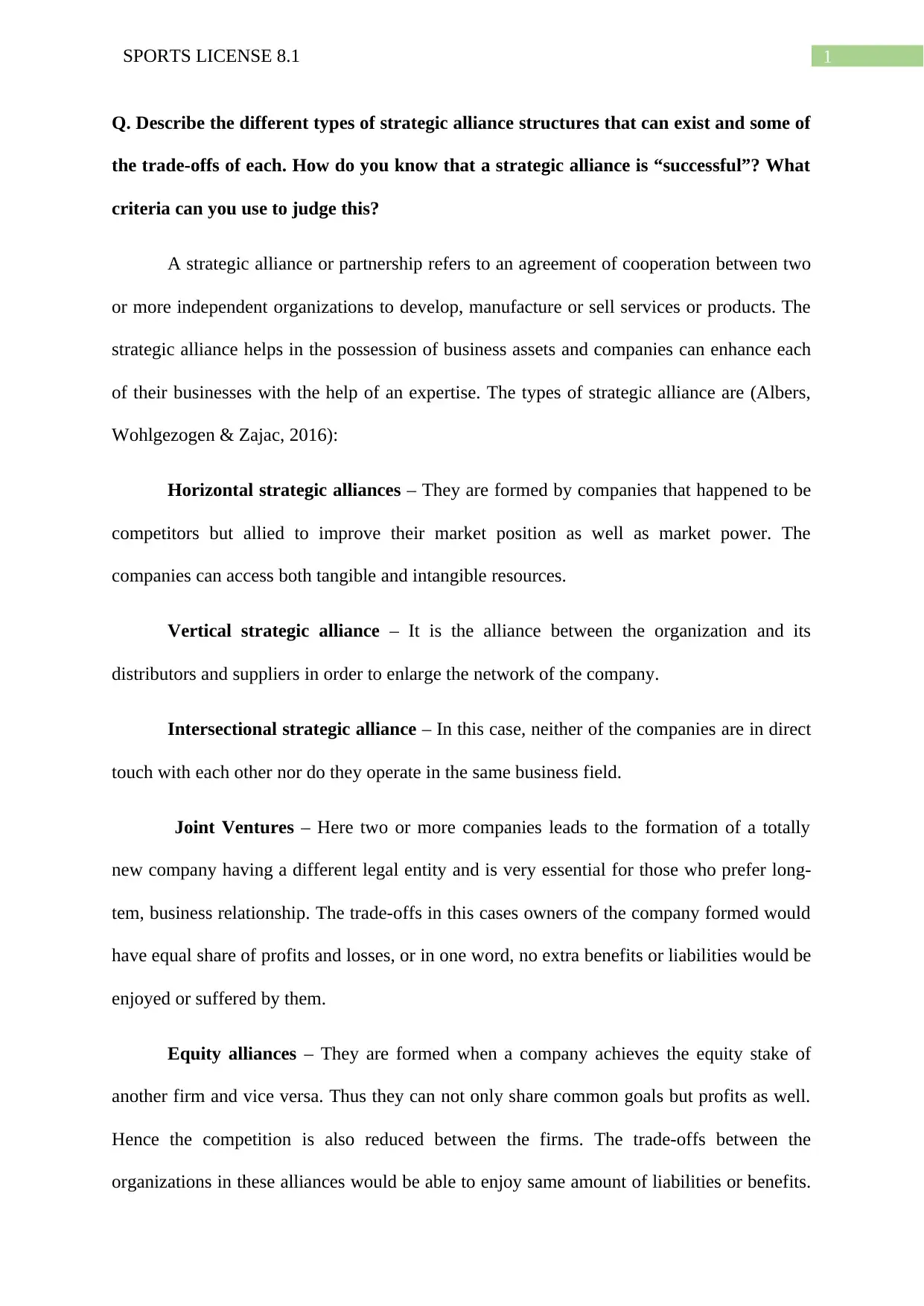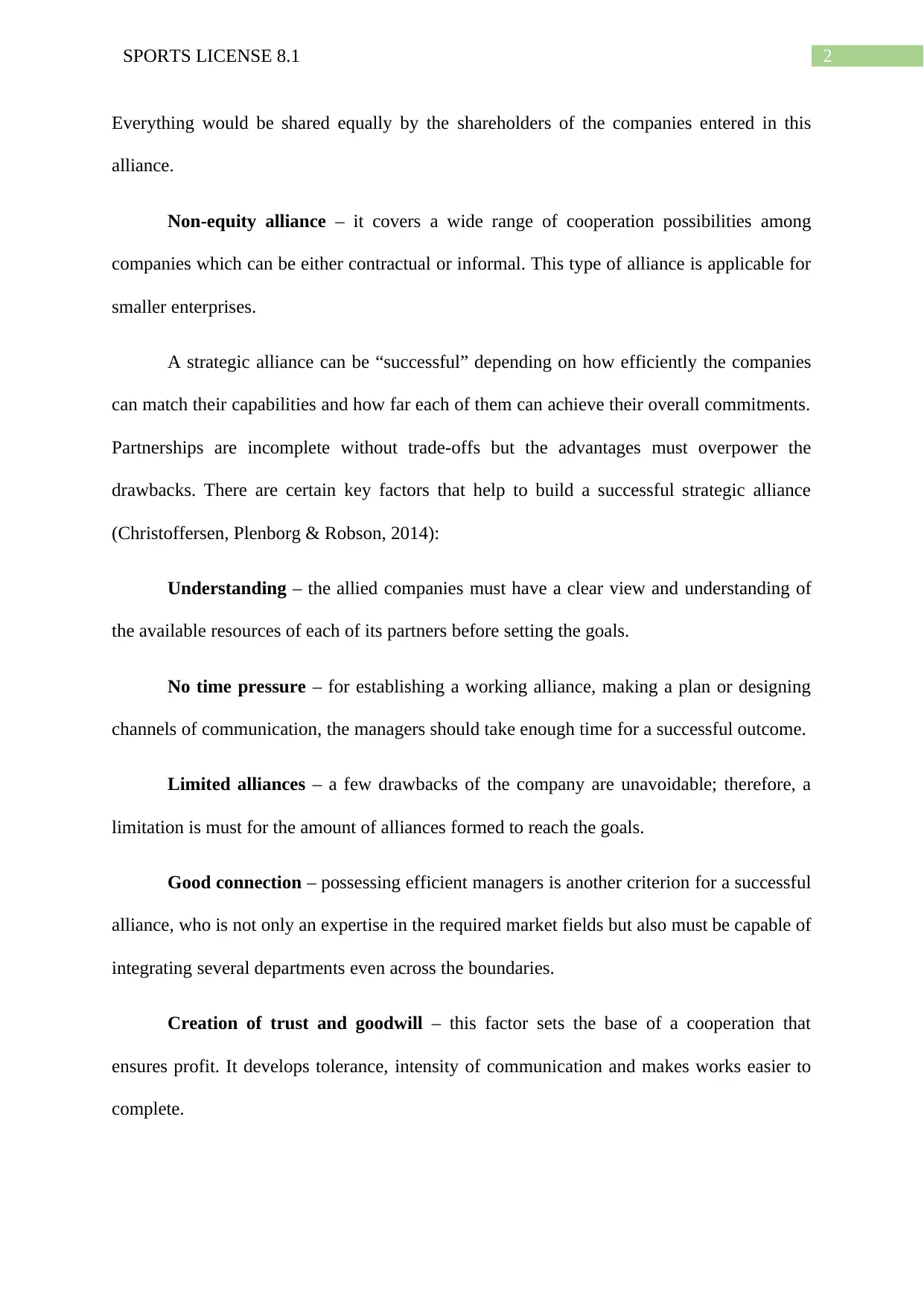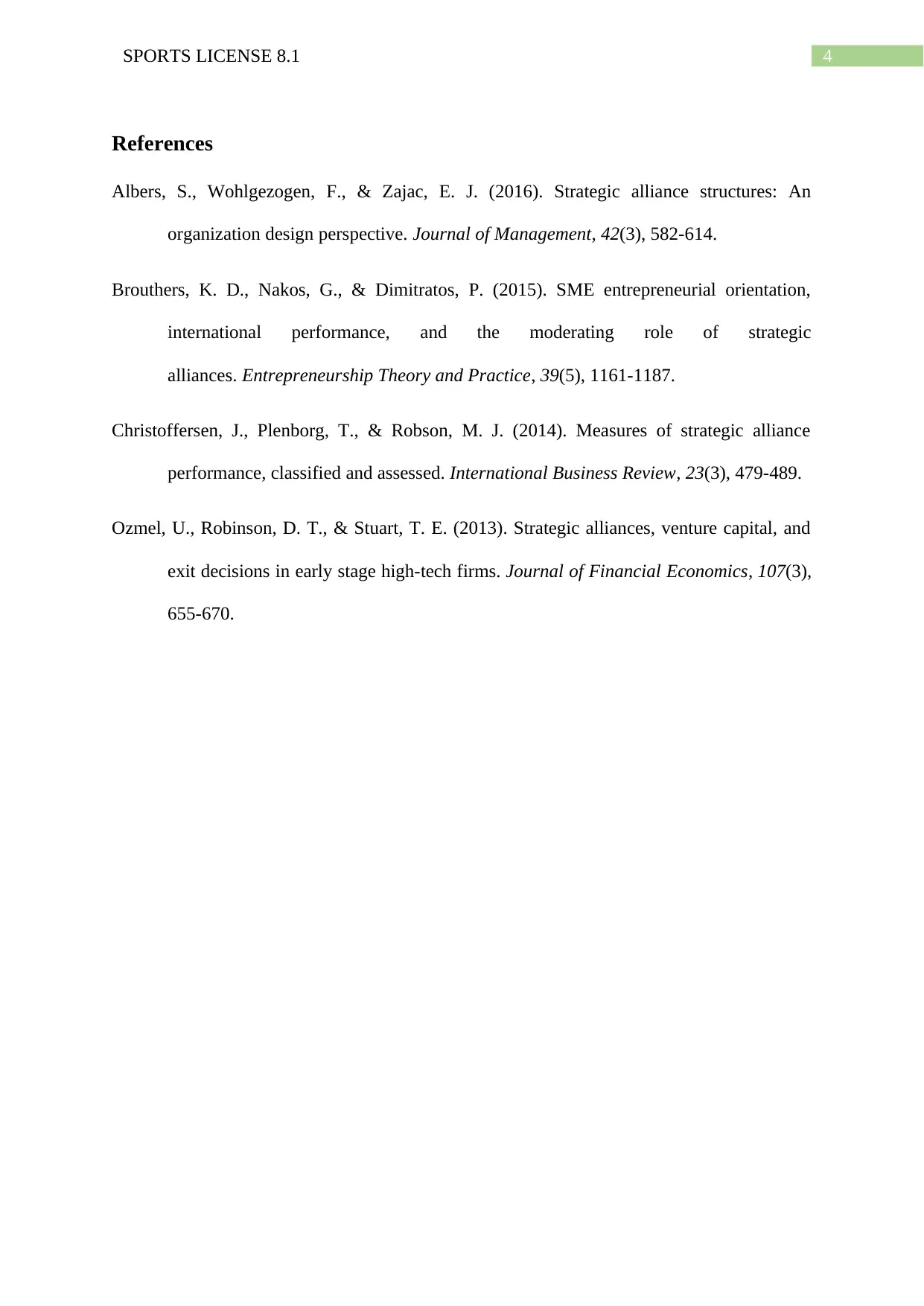Sports License 8.1: Strategic Alliance and Licensing Plan
VerifiedAdded on 2022/12/05
|5
|882
|256
Report
AI Summary
This report analyzes strategic alliance structures, including horizontal, vertical, intersectional, joint ventures, equity, and non-equity alliances, along with their respective trade-offs. It defines the criteria for a successful strategic alliance, emphasizing understanding, time management, limited alliances, good connection, trust, intense relationships, and clear goals. The report then shifts to a licensing plan for the World Triathlon Corporation (WTC), the owner of the Ironman Triathlon. It outlines the process of identifying licensing opportunities, including products and categories beyond physical merchandise. The report further establishes three licensing business objectives for the WTC plan, prioritizing identified licensing opportunities for each objective and discussing their alignment with the business goals. The student has provided a detailed analysis of the strategic alliances, the WTC licensing plan and the Ironman brand opportunities.
1 out of 5











![[object Object]](/_next/static/media/star-bottom.7253800d.svg)